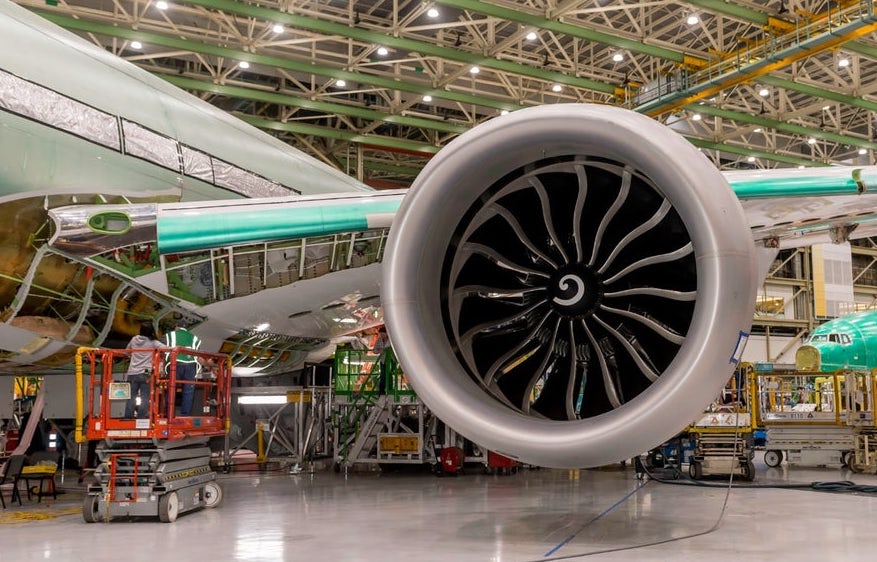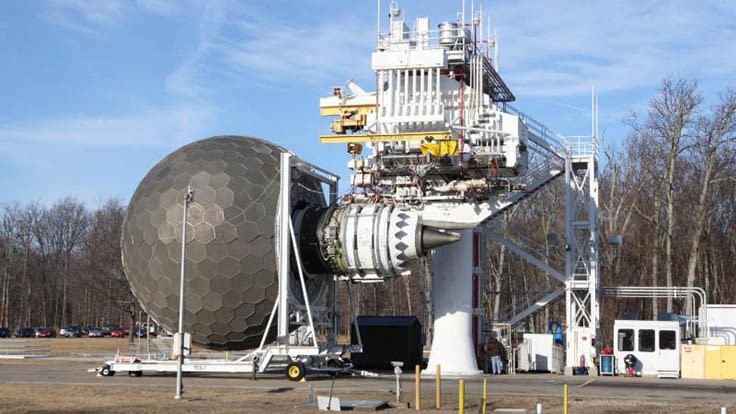GE Aviation, a multinational provider of jet engines, components, and integrated systems, has become the first to offer metal additive manufacturing for commercial jet engine component repairs.
The firm’s Loyang facility in Singapore has become the first maintenance, repair and overhaul (MRO) facility worldwide that has been approved to use the technology for this purpose.
“This disruptive technology can be used for lots of applications, not only in aviation,” said Chen Keng Nam, Executive Manufacturing Leader at GE Aviation Engine Services Singapore (GE AESS) in Singapore. “When I see beyond the realm of repair into new-make, it’s mind-blowing to see the parts that we can design and print using additive.
“Now designers are making use of the ability to produce new designs that couldn’t be imagined or manufactured before with traditional methods.”

3D printing at GE Aviation
Since GE first incorporated additive manufacturing within its GE90 engine, the technology has played a key role in the development of the firm’s next-generation GE9X engine, which it has been working on since 2013.
In 2020, Boeing completed the first flight of its 777X jet powered by two GE9X engines, which are each equipped with over 300 3D printed parts. Aside from its engines, GE Aviation is also deploying additive manufacturing for other airplane components and delivered its 100,000th 3D printed LEAP fuel nozzle tip in August last year.
Regarding MRO, GE Aviation is already using 3D printing to repair parts in its CF6 engines, which it says is the most reliable and best-selling commercial engine on wide-body aircraft. The next goal, according to the firm, is to deploy the technology to repair parts in its CFM56 engine, reportedly the best-selling engine in commercial aviation history.

3D printing for aerospace MRO
When repairing used parts, the repair has to be customized for each individual part as each one wears differently during service, a capability that can be realized with 3D printing. Additive manufacturing for repair also enables new levels of complexity, and offers significant potential in this area.
“In this part of the supply chain our customers truly value faster turn-around time, and that’s what we are achieving,” said Iain Rodger, Managing Director at GE AESS. “Using our GE Additive Concept Laser M2 machines typically halves the amount of time it takes us to repair these aircraft parts.”
One example of where 3D printing for MRO has been used at GE Aviation is in the repair of high-pressure compressor (HPC) blades that run at high speeds and tight clearances within aircraft engines. The blades are subject to regular wear and tear that requires continuous repair and replacement over time, traditionally involving a long process of cutting, welding and grinding to create the proper shape for the part.
To make the repair of the HPC blade tips more efficient, GE Aviation has developed an automated additive manufacturing process that saves both time and costs in regard to labor and machining. The process utilizes an image analysis software that maps the shape of a used blade and creates customized instructions for GE’s Concept Laser M2 3D printer to fabricate a new tip. The 3D printed part can then be finished with minimal additional processing.
“Productivity has increased with our employees able to repair twice as many parts in a day compared to the conventional repair process,” said Rodger. “Less equipment is also needed for post-processing so the floor space required is reduced by one third. Further to that we are currently assessing what we are going to do in turbine parts and other components beyond compressors.
“Day-to-day, working with customers, they will know that there’s a difference as they will be seeing their parts return to them more quickly.”
In addition to quicker turnaround times, deploying metal 3D printing for aircraft part repairs also has sustainable benefits as well.
“To me, one of the significant advantages of additive is its sustainability,” Rodger added. “This is going to allow us to repair more parts and throw fewer parts into the bin, use less energy, generate less waste and have a smaller footprint. Repair capability is a big part of the sustainability journey. As the industry expands and new technology is developed, that will only increase.”

Gaining approval for AM MRO in Singapore
Singapore’s Economic Development Board supported GE Aviation’s initial development trials for introducing metal additive manufacturing for aircraft MRO into the country. The Singapore team fine-tuned the repair process, designing tooling to prepare and print parts efficiently, before conducting extensive trials of the technology to ensure the quality and safety of the parts.
“While teams at the GE Aviation Additive Technology Center in Cincinnati and GE Additive Lichtenfels in Germany worked on developing printing parameters for the Concept Laser M2 machine, our team here in Singapore focused on the modifications needed to make the process robust and production-friendly in a high-volume repair process,” said Shih Tung Ngiam, Senior Engineering Manager at GE Aviation.
In 2020, GE Additive developed a pilot production line and automated powder recycling system to streamline the repair operation, however this was delayed for some time by the Covid-19 pandemic. The following year, the Loyang team was ready to go live with the full-scale production line for repairing HPC blades.
The team found that leveraging the Concept Laser M2 metal 3D printer not only allowed the components to be repaired quicker using less floor space, but also produced the repaired blade very close to the final desired shape, requiring significantly less labor and equipment to achieve the finished part.
“Additive gives us speed and productivity with less floor space required,” said Ngiam. “We gave a lot of careful consideration to how best to integrate the M2s into the rest of the repair line. We completed an assessment of which parts of the repair we should leave alone, which ones could benefit from additive and what other changes we needed to make to the repair process for it to make sense.”
The GE Aviation teams then established a robust quality-assurance process to ensure the additive MRO process could be approved for end-part production. The facility has now gained approval for using its metal additive manufacturing repair process for the MRO of commercial jet engine parts.
Subscribe to the 3D Printing Industry newsletter for the latest news in additive manufacturing. You can also stay connected by following us on Twitter and liking us on Facebook.
Looking for a career in additive manufacturing? Visit 3D Printing Jobs for a selection of roles in the industry.
Subscribe to our YouTube channel for the latest 3D printing video shorts, reviews and webinar replays.
Featured image shows GE Aviation has used 3D printing to produce aircraft parts, including in Boeing’s 777x jet engine (pictured). Photo via Boeing.


